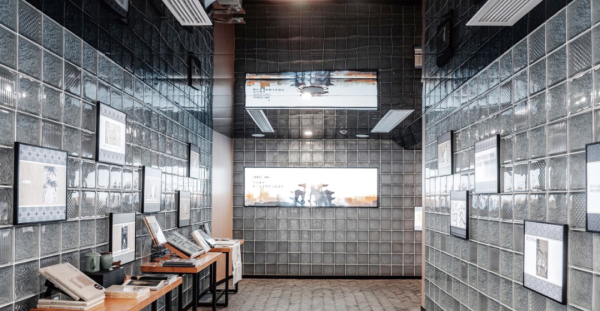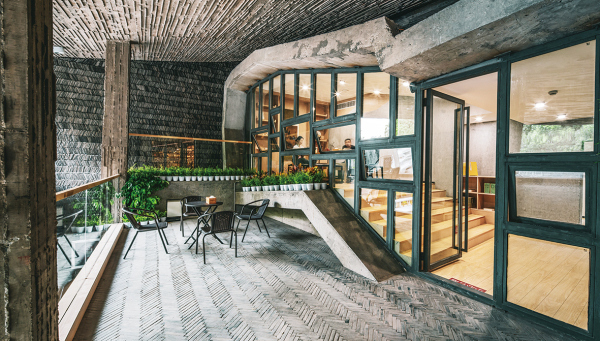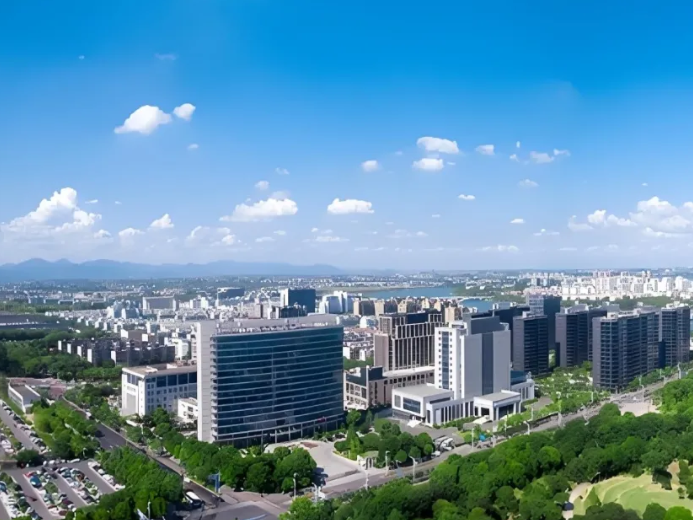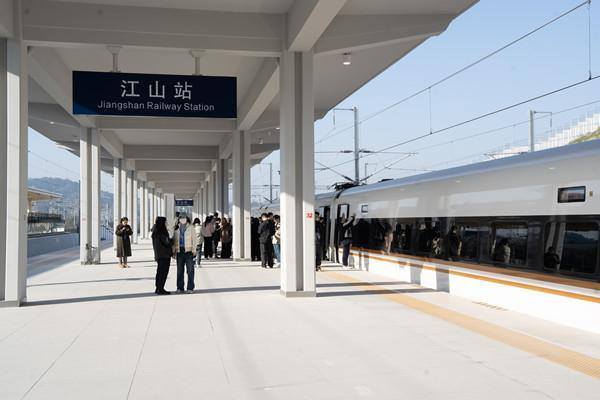
Walk along the Zhongshan Road all the way to the south end, and you will reach the Southern Song Imperial Street, once the center of Lin’an, the capital city of the Southern Song dynasty (1127-1279) and present-day Hangzhou. The importance of the Imperial Street could not be overstated for both the Southern Song court and the common people at that time, for tens of thousands of shops were located around it, and half of the city’s population lived nearby.
Indeed, in Xihu Youlan Zhi, or Gazetteer for Sightseeing around the West Lake, Imperial Street was regarded as the principal axis that could effectively be employed to control the whole city. Starting from Hening Gate of the Imperial Palace to the south, through the Chaotian Gate (currently known as Gulou, or the Drum Tower), via the Zhong’an Bridge and the Guanqiao Bridge, before coming to an end at the Xinzhuang Bridge to the north, the Imperial Street stretched for some ten li (or five kilometers), hence its sobriquet Shili Tianjie, or Ten-li Heavenly Street. It was the path that the Southern Song dignitaries must tread on whenever they needed to get around. The street also served as a special imperial passageway when the emperor performed worshipping rituals during the first month of each lunar season, i.e. the first, fourth, seventh, and tenth lunar month.
The Imperial Street was the indisputable political center of the Southern Song dynasty, where vital government ministries and organs were concentrated. With such an elevated political status, the street and its management fell under the direct purview of the governor of Lin’an, the capital city. The Annals of Lin’an during the Reign of Xianchun recorded the largest renovation ever done for the street in the Southern Song period, which, unfortunately, was also the last, for the dynasty would crumble eight years later.
After the collapse of the Southern Song, Imperial Street gradually fall into oblivion in the next few hundred years. Until 2009, when it was reopened after extensive reconstruction and repairs. The new Imperial Street, rebuilt along a significant part of the Zhongshan Road, is about 3.7 kilometers long, starting from the Drum Tower in the south and ending at the intersection with West Lake Avenue.
Since its reopening, tourists from home and abroad have flocked to the street to have a taste of its glorious past, walking from the north to the south before arriving at the Drum Tower, in which much of the city’s history has been stored. Outside, history phases into the present, cars, and flyovers readily bringing visitors back to reality.
Adjoining the Drum Tower lies a small piece of square, which is aptly named the Drum Tower Square. At one side of the square is a large bookstore, and on its front walls, written in Kai Shu or standard Chinese script, are four characters “Nan”, “Song”, “Shu”, “Fang” (Southern Song Study Room). The name of the bookstore indeed befits what Imperial Street stands for, as does its exterior, a mixture of blue tiles and glass.
When people walk inside, their attention would only be caught: a short but zigzagging corridor, both sides covered with glass in water ripple patterns, as if forming a curtain, and creating the blurred effect of light and shadow day and night; electronic screens on the walls introducing figures, poems and paintings from the Southern Song dynasty, as well as books and porcelain products related to the period. Further inside, the space suddenly opens up. A flight of broad and giant staircases doubles as “seats” for readers and visitors — on the sides of each staircase are also embedded LED screens, showing video clips on the Southern Song. The flight leads straight to a book wall on the second floor and the gentle and warm color of the wood makes it look like a personal study room.
Since opening in September 2020 along with the neighboring Qinghefang Ancient Street, Nansong Shufang has fast become one of the favorite places for readers and tourists even as the bookstore continues to explore new ways of showcasing the splendor of the Song culture.
Bookstores have been a major feature of Hangzhou since times of old, and it was no exception when it came to the Song dynasty (960-1279). While a number of bookshops were already in operation during the Northern Song (960-1127), records show Lin’an boasted nearly 20 private bookshops in the Southern Song, most of which, coincidentally or otherwise, concentrated near the Drum Tower. Unlike their modern counterparts, these bookshops not only sold books but also printed and published books, and some of the surviving copies that are collected at a few national-level museums are so valuable that they are seen as the museums’ “most precious treasures”. With their superior papers, elegant bindings, clear handwriting, and exquisite inks, Song books served as the model for later generations and had a great influence on the style of modern books. Buttressed by unprecedented development in economy, culture, handicraft industry, and commerce, publishing in the Song boomed.
For one thing, the number of books published in the Song dynasty far outstripped previous dynasties. According to World Books, a trade magazine in China, while its predecessors in the prior 1,000 to 1,100 years published more than 23,000 books in 270,000 volumes, Song alone produced half of the number. For another, not only the number of books, the categories also increased considerably. The works of the Southern Song dynasty covered all the knowledge areas of the time: from the traditional Confucianism, Buddhism, and Taoism and poetry, to astronomy, geography, medicine, agriculture, industry, folk literature, and even daily necessities of the common people. As well as contemporary books, works of previous generations were printed, too.
The prosperity of the publishing industry in the Southern Song was greatly aided by its highly developed paper-making industry and highly advanced printing technology. It also testifies to the flourishing of ideas and thought in the era, which has been rightly called “the renaissance in the orient” and the “second Hundred Schools of Thought in Chinese history”.

The second-floor terrace of Nansong Shufang.





